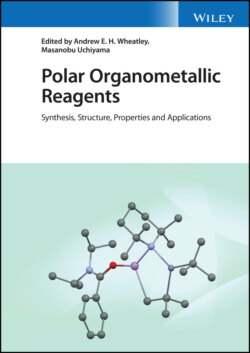Читать книгу Polar Organometallic Reagents - Группа авторов - Страница 23
1.4.3 Cadmates
ОглавлениеLimited synthesis using ate complexes has been achieved with the higher elements of group 12. However, in recent years limited reports of the deprotometalation of functionalized aromatics and heterocycles have appeared. These have sought to extend the role of organocadmiums as soft nucleophilic reagents in organic synthesis [195, 196]. Whereas Ph3CdLi 139 was first reported almost 70 years ago [197], the combination of CdCl2(TMEDA) and LTMP was reported just a decade ago. This work evolved from studies suggesting the cooperative action of LTMP and (TMP)2Zn [194]. In the current case, neither CdCl2(TMEDA) nor LTMP satisfactorily deprotonated anisole, whereas a 1 : 3 mixture of the two did so in 74% yield according to trapping with I2 [198]. At the same time, 13C NMR spectroscopy suggested the absence of LTMP in solution, pointing to lithiocadmate formation. Subsequently, a range of aromatic amides, esters, nitriles, and even ketones were shown to undergo selective ortho reaction. Aromatic halides revealed chemoselective iodination remote to the halogen (Scheme 1.30). Efforts next turned to the deprotometalation of aromatic heterocycles (both π‐deficient and π‐excessive), where impressive results were obtained, beating those reported for Zn (see above) [192, 194]. The reactions of a wide range of N‐, O‐, and S‐heterocycles were subsequently probed [199]. Particularly interesting, very sensitive reagents such as diazines proved amenable to reaction (Scheme 1.30).
Scheme 1.30 Comparing the performance of Cd and Zn reagents in aromatic halogenation.
